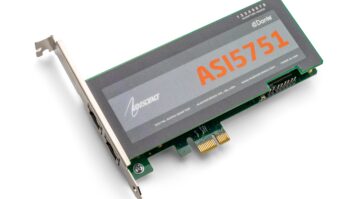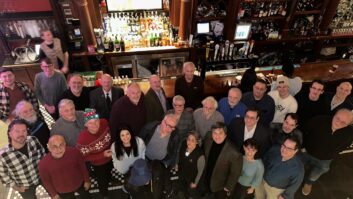 Chris Crump, CBNE, is senior director of sales and marketing for Comrex Corp. This interview is from the 2021 Radio World ebook “Remote Radio Phase II: What We’ve Learned During a Pandemic.”
Chris Crump, CBNE, is senior director of sales and marketing for Comrex Corp. This interview is from the 2021 Radio World ebook “Remote Radio Phase II: What We’ve Learned During a Pandemic.”
RW: Chris how will our workflows and future infrastructure be different because of the pandemic and how radio responded to it?
Chris Crump: Back in the good ol’ days before lockdowns, self-quarantines and government-mandated stay-at-home orders, some of our customers had the luxury of using our products to broadcast their shows from home studios or mountain getaways.
After March of 2020, broadcasting from home became a necessity. Comrex moved quite a bit of product to help customers across several verticals adapt to the new way of working.
In early 2021 I’ve been talking to a lot of customers who have related conversations with management about reducing office and studio space. As building leases come up for renewal, it is making a lot of sense for air staff and content creators to work from home, and the cost savings is substantial.
We’ve been specialists in remote broadcasting since 1961 and up until now, remotes have been about sports and news coverage or the occasional NTR event. But now, remote is how the majority of broadcasters/content creators are working. Needless to say, it’s been a great time (businesswise) to have the word “remote” in your company description.
RW: Which Comrex products have played critical roles in these new workflows, and why?
Crump: Our ACCESS NX Portable IP audio codec was front and center in helping broadcasters to get their air staffs equipped to broadcast from home. Our production team worked overtime and weekends over the past year to keep up with the demand.
The volume of NX Portables was matched with the complementary studio units, the ACCESS NX Rack and ACCESS MultiRack. One large corporate broadcaster made a substantial purchase of our BRIC-Link II IP audio codecs, which they pair with a small podcasting mixer in a convenient and easy-to-configure take-home kit for air talent.
Our Opal IP audio gateway saw a sizable increase in demand for podcasters that needed an easy way for their guest to connect to them remotely.
I think it’s fair to say that our entire product line solved a lot of different problems for engineering staffs all over the world as the pandemic took hold. .. .We are having lots of conversations with customers about new solutions for the new and unique scenarios that are presenting themselves in the wake of current events.
RW: Talk to me about the required level of home connectivity and ISP support for work-from-home operations.
Crump: Since we introduced our ACCESS IP audio codecs around 2004, we have worked very hard to ruggedize this platform and make it the most reliable means of transmitting broadcast quality audio, even on challenging networks.
That being said, my general advice to anyone that asks “what kind of connection should I get” is get the best service you can afford. And that service should reflect the seriousness of your endeavor. In some cases, having two network options is not only a good idea but crucial.
As more and more people have been working from home, engaging in endless Zoom video calls and kids digital learning from home, we’ve seen huge demands on network infrastructures. We created our CrossLock VPN technology to respond to these kinds of demands to avoid packet loss and provide stability. Part of what makes CrossLock so special is its ability to utilize multiple data networks and load balance between them to respond to packet loss or even network outages in a very nimble and transparent way.
So, to recap: Get the best network you can afford, then get a second or third network (wired broadband or 4G LTE) and let CrossLock on your ACCESS or BRIC-Link II codec do all the heavy lifting for you to keep you on the air.
RW: What advanced considerations did stations deal with?
Crump: I can tell you that we heard a lot of very interesting stories from Comrex users, talent and engineers with unique “work from home” challenges faced on a daily basis — from a cat that “learned” how to disconnect the host from the station with a well-placed paw, to a host who uses a closet as a studio because a closet full of clothes is the best acoustic treatment ever.
I think that many engineers grappled with a shortage of mix-minuses, especially on older analog consoles. It’s certainly an argument for upgrading to a fancy new AoIP console/routing system like WheatNet, Axia or SAS. These all have mix engines with the ability to generate as many mix-minuses as you need.
I’ve personally had a lot of conversations with announcers about setting up mix-minus on their home consoles. In fact, we’re finishing up a few videos on the topic that we hope our customers will find useful.
RW: Anything else we should know?
Crump: We have always been a strong advocate of improving the listener experience on any platform where content is meant to entertain, educate and inform.
The main mission of Tom Harnett, our technical director, is to rid the airwaves of low-grade, tinny telephone audio. Our Opal IP audio gateway was one of those first big steps for us. And it’s really nice to hear it being used more and more on the airwaves.
I’m pretty excited about some of the things I’m seeing and hearing from our development team, especially considering how well they lend themselves to the new way that broadcasters and content creators are having to work. Sure, it’s a “new normal” or whatever, and there are lots of challenges; but we think the new normal is going to sound pretty great if we have anything to do with it.












